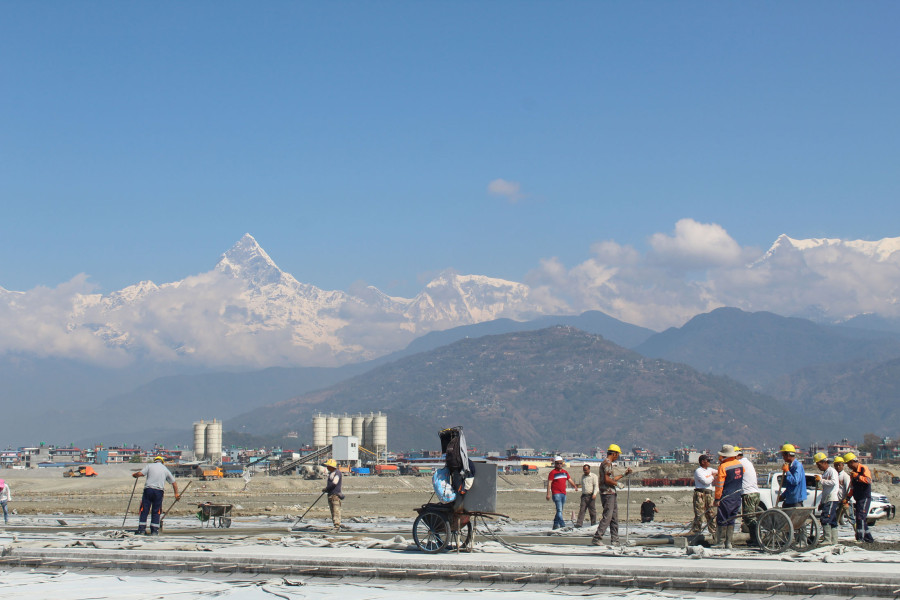Money
Nepal’s debt nearly triples in the last five and half years
Experts, however, say the country still has room for borrowing needed for development but insist that there should be productive use of the borrowed funds.
Prithvi Man Shrestha
The government has been increasingly relying on domestic and external debts to meet the resource gap amid shrinking revenue amid the coronavirus pandemic.
As a result, the country debt has nearly tripled in the last five and half years. According to the Finance Ministry, outstanding debt of the country increased to Rs1.50 trillion as of the first half of the current fiscal year from Rs544.91 billion in fiscal year 2014-15.
As of the last fiscal year 2019-20, the country’s outstanding debt was worth Rs1.41 tillion, 40.16 percent of the country's gross domestic product (GDP), according to the Financial Comptroller General Office, a government agency responsible for keeping record of the income and expenditure of the government.
Even though the country’s debt liability was rising in a slow pace until fiscal year 2015-16, it surged with the country requiring to generate massive resources for post-earthquake reconstruction.
The deadly earthquake in 2015 not only caused loss of over 8,000 lives but also the damaged properties worth over Rs700 billion, according to the Post Disaster Risk Assessment report.
The country also required more resources for institutionalising the federal set up after the 2017 elections and the Covid-19 pandemic affected the country’s economy badly leading to reduced revenue generation for the government as result of which the government has been increasingly relying on the domestic and external loans for bridging the resources gap.
The government collected just 75.6 percent of targeted revenue in the last fiscal year 2019-20, according to the Financial Comptroller General Office. The government collected revenue of Rs841 billion against the target of Rs1.11 trillion, the office said.
The revenue target of current fiscal year 2020-21 will also not be met with the finance ministry through the mid-term review of the budget trimmed revenue target to Rs931.85 billion against the initially targeted Rs1.01 trillion.
Even though the debt level increased substantially in the last five years, experts said that the country should not be worried about current level debt.
“In the past, we feared taking loans which deprived us from potential infrastructure development,” said Min Bahadur Shrestha, former vice-chairperson of the National Planning Commission, the main planning body of the government. “For a country like Nepal which can collect limited resources from the revenue, we have to rely on domestic and external debt to finance big infrastructure projects.”
He said that the question should not be whether Nepal should take more loans but whether there has been productive use of the loans.
Experts say that the country still has the ‘fiscal space’ or room for taking more loans. “We should not be worried about debt sustainability till our debt level remains 50-60 percent of the GDP,” said Nara Bahadur Thapa, former executive director of Nepal Rastra Bank, who had also worked as a policy advisor on macro-economic management at the International Monetary Fund in the late 2000s.
“We should not fear taking out loans to boost the economy as long as there is fiscal space,” said Thapa. “With the productive use of debt, we can boost our economy and the economic expansion is a must to enhance the country’s ability to pay the debt.”
However, the government has not been able to spend the available resources, both domestic and external, delaying the completion of the important development projects. Most of the national pride projects have faced time and cost overruns.
According to the mid-term review of the budget for the current fiscal year, expenditure in the National Pride Projects has remained just 15 percent of the total allocated budget as of the first half of the current fiscal year.
“Many countries that developed rapidly, had borrowed huge amounts of loans and utilized them properly, particularly in infrastructure development. They have over 100 percent debt to GDP ratio but they are now richer and don’t fear more indebtedness,” said Shrestha, who is also a former executive director of the central bank.
According to Shrestha, the country is in greater need to borrow more this time as the country’s economy is in tatters and the government is required to support even the private sector to revive the economy.
In its recent report ‘Global Economic Prospect’ the World Bank said that Nepal’s economic growth Nepal is expected to record 0.6 per cent in the current fiscal year, which is 1.5 percentage points lower than its previous estimate.
The global lender said that Nepal’s economy is estimated to have decelerated to just 0.2 per cent in fiscal 2019-20, 1.6 percentage points lower than its June 2020 projections.
Therefore, without economic expansion, there remains a risk of the country falling into a debt trap, according to experts.
This is not the first time that the debt is getting to a point that may be worrisome.
In the early 2000s when the Maoist insurgency was at its peak, the government’s treasury was under severe duress and the country’s debt to GDP had reached as high as 63.9 percent for 2001-02.
A senior government official at that time said there was not enough money in the state coffers to pay salaries to government employees and there was high demand for a budget for security agencies to fight insurgency. But, the high debt ratio was creating trouble.
“Whenever Nepal Rastra Bank sent us treasury positions on a weekly basis, only a few of us had access to that report. We used to repay high-interest loans without the knowledge of many people, so that demands for more resources from the security agencies could be avoided,” former auditor general Bhanu Acharya, who was the finance secretary in the early 2000s, had told the Post last year.




 19.12°C Kathmandu
19.12°C Kathmandu














